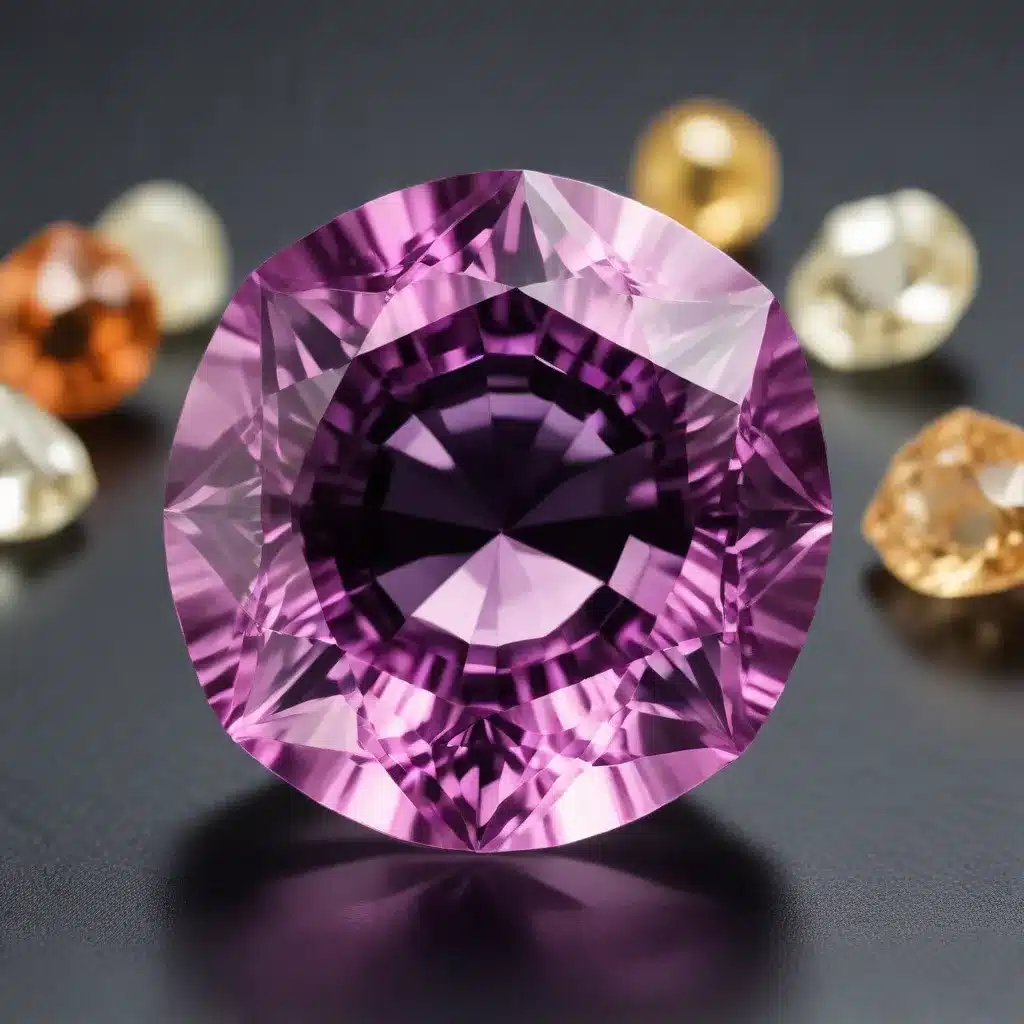
The art of gemstone faceting is a delicate interplay between science, precision, and creativity. When it comes to synthetic gemstones, the faceting process takes on an added layer of complexity, as these lab-grown miracles of nature require specialized techniques to unlock their full brilliance and fire.
At the Shelby Gem Factory, we pride ourselves on our expertise in the realm of synthetic gems, from the intricacies of moissanite vs. cubic zirconia to the latest advancements in chemical vapor deposition and hydrothermal synthesis. But the true heart of our craft lies in the masterful faceting of these captivating creations.
Fundamentals of Crystallography
The foundations of exceptional faceting begin with a deep understanding of the underlying crystalline structure of gemstones. Whether natural or synthetic, all gems are born from the intricate arrangement of atoms within a defined crystallographic system. This atomic architecture not only dictates the outward form of the stone but also governs its optical properties, hardness, and cleavage planes.
Synthetic gems, in particular, offer a unique challenge, as their controlled growth environments can produce subtle variations in their crystalline makeup compared to their natural counterparts. Mastering the art of faceting these materials requires a keen eye for detecting such nuances and tailoring the cutting process accordingly.
Light Interaction and Optical Properties
The true beauty of a gemstone lies in its interaction with light. The precise arrangement of facets on a perfectly cut gem allows for the optimal refraction, dispersion, and total internal reflection of the incident rays, resulting in a captivating display of brilliance, fire, and scintillation.
For synthetic gems, where the growth process can be carefully monitored, the faceting artisan has the unique opportunity to fine-tune the optical properties of the material. By calculating the ideal proportions and symmetry of the cut, they can maximize the stone’s ability to capture and dance with the light, elevating the visual splendor of these lab-grown wonders.
Geometric Faceting Techniques
The faceting process itself is a delicate dance of geometric precision, requiring a deep understanding of cut styles, facet angles, and polishing techniques. From the classic brilliant cut to the bold step cut, each approach offers its own unique set of challenges and rewards when applied to synthetic gems.
Mastering the use of specialized faceting jigs, dops, and laps is crucial, as these tools allow for the creation of the intricate facet patterns that define the stone’s character. Equally important is the application of advanced measurement instruments, ensuring that every angle and proportion is meticulously calculated for maximum impact.
Synthetic Gem Production Processes
The world of synthetic gemstones is continuously evolving, with innovative techniques such as chemical vapor deposition (CVD), flux growth, and hydrothermal synthesis pushing the boundaries of what’s possible. Understanding the nuances of these production methods is essential for the faceting artist, as they must tailor their approach to the unique properties of each synthetic material.
CVD-grown diamonds, for instance, may require subtle adjustments to the faceting process to account for their slightly different optical behavior compared to their mined counterparts. Likewise, corundum varieties produced through flux growth or hydrothermal synthesis may demand unique handling to preserve their distinctive color and clarity characteristics.
Faceting Design and Optimization
The true mastery of gemstone faceting lies in the ability to create designs that not only showcase the inherent beauty of the material but also push the boundaries of what’s possible. By deeply understanding the relationship between cut, clarity, and brilliance, the faceting artist can craft synthetic gems that captivate the eye and ignite the imagination.
From the meticulous calculation of ideal proportions to the pursuit of perfect symmetry, each facet is a testament to the faceter’s skill and an homage to the captivating nature of these lab-grown treasures. The result is a symphony of light, a dazzling display that elevates the synthetic gem from a mere curiosity to a work of art.
Quality Control and Grading
In the world of synthetic gems, quality control and grading are paramount. Discerning buyers demand not only flawless brilliance but also the assurance that their cherished stones have been subjected to rigorous testing and evaluation.
At Shelby Gem Factory, our team of expert gemologists employ a multi-tiered approach to quality control, leveraging advanced gemmological testing methods and time-honored visual inspection techniques. From refractive index measurements to birefringence analysis, every synthetic gem that passes through our doors is meticulously analyzed to ensure it meets the highest standards of excellence.
Trends and Innovations
As the landscape of synthetic gemstone production continues to evolve, the faceting artisan must remain at the forefront of innovation, constantly exploring new techniques and technologies to push the boundaries of their craft.
From the emergence of automated faceting processes to the development of sustainable gem production methods, the future of synthetic gem faceting is rife with exciting possibilities. By embracing these advancements and maintaining a steadfast commitment to quality, the Shelby Gem Factory team is poised to redefine the very notion of flawless gemstone beauty.
Whether you’re a seasoned jewelry enthusiast or a discerning collector, the art of synthetic gem faceting is a testament to the power of human ingenuity and the unparalleled splendor of nature’s crystalized wonders. At Shelby Gem Factory, we are proud to be at the forefront of this captivating journey, where science and creativity converge to create true masterpieces of the gemstone world.

